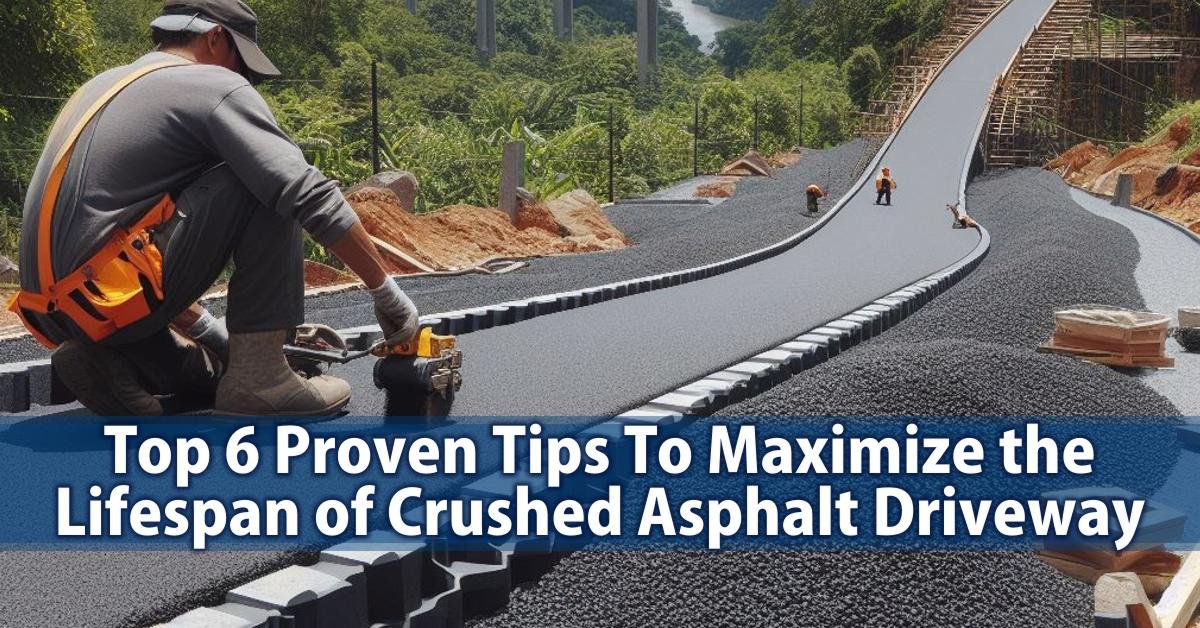With over 25 years of experience as a licensed civil engineer specializing in asphalt materials and pavement design, I am frequently asked for guidance on constructing pedestrian walkways, jogging paths, bike trails, and nature walkways using crushed asphalt. Based on my engineering expertise, crushed asphalt provides a durable, sustainable, and cost-effective surfacing option for natural and recreational trails. However, proper installation practices are critical for achieving lasting performance. Here I outline key best practices for working with crushed asphalt pathways based on my insight as an engineer.
Why Choose Crushed Asphalt for Trails?
Compared to materials like wood chips, gravel, or bare earth, crushed asphalt offers numerous advantages that make it a preferred choice for environmentally friendly trails:
- Firm Yet Flexible – Crushed asphalt compacts into a firm, stable surface but retains the flexibility to handle tree root growth.
- Accessible Surface – Wheelchairs, strollers, and bikes can easily use crushed asphalt paths with no ruts.
- Drainage – Water drains through crushed asphalt rather than pooling on the surface. This keeps trails dry.
- Low Maintenance – Minimal upkeep is needed beyond occasional weed control and surface raking.
- Sustainable – Crushed asphalt recycled from old pavement reduces landfill usage.
The durability, stability, and drainage properties maximize enjoyment for recreation, exercise, and nature study on trails surfaced with RAP.
Importance of Proper Base Preparation
As a civil engineer, I emphasize that creating a proper base beneath crushed asphalt is equally important to the surface layer. For sufficient structural support, I recommend:
- Excavating 4-6 inches to reach firm native soil
- Filling with well-draining crushed stone road base
- Compacting with a vibratory plate compactor in thin layers
- Slope base for drainage – 1% cross slope and 0.5% to 1% grade
Taking time to prepare a sound, stable base prevents premature cracking or settling of the RAP surface course above.
https://calculatorasphalt.com/luxury-asphalt-shingles-guide/
Tamping and Compacting Crushed Asphalt
After base completion, the crushed asphalt surface layer should be installed. For 1-3 foot wide trails, I suggest:
- 3/8 to 1/2 inch minus RAP material
- 2 to 3 inch thickness after compaction
- Dampen surface before RAP placement to reduce dust
- Spread loose crushed asphalt using a rake
- Tamp down vigorously with a hand tamper until tightly packed
- Make multiple passes with the tamper for maximal compression
Proper tamping and compaction is essential to create a firm, stationary trail surface resistant to foot, bike and wheelchair traffic.
https://calculatorasphalt.com/guide-to-best-paver-sealers/
Edge Control for Clean Lines
For aesthetic and longevity purposes, I recommend installing edge restraints to delineate crushed asphalt trails. Options include:
- Timber Edging – Pressure-treated 2×4 or 2×6 boards provide separation from grass and soil. They can be staked in place.
- Plastic Edging – Black polyethylene or PVC edging is an inexpensive choice to install using stakes or glue.
- Concrete Curbs – Short curb sections offer a neat finish and sturdy edge barrier.
- Landscaping Blocks – Small blocks are quick to install yet prevent border erosion.
Keeping trail edges neatly lined contributes to public enjoyment and reduces erosion from water runoff.
Tips for Curves, Grades, and Accessibility
When laying out crushed asphalt trails, I advise:
- Gradual curves – Keep turns sweeping rather than tight for better bike handling.
- Gentle grades – Limit slopes to 5% or less to accommodate people of different abilities.
- Crowning – Add 0.5-1% crown on the surface to promote drainage off the center.
- Clearance – Maintain 2-foot shoulders and 7 foot height clearance.
Following accessibility best practices allows more people to use and appreciate crushed asphalt recreation trails.
Conclusion
I hope this overview provides helpful professional guidance on constructing durable crushed asphalt walking, jogging and biking trails. Please feel free to contact me with any other questions!
FAQ
What size of crushed asphalt is best for trails?
For surfacing trails, I suggest using 3/8 inch minus or 1/2 inch minus crushed asphalt. The smaller RAP particles compact well under tamping yet still allow drainage.
Can crushed asphalt trails be used year-round?
Yes, crushed asphalt provides a firm surface in warm and cold weather. For winter usage, salt or sand may need to be scattered for ice traction. Snow should be shoveled or blown off for access.
How often does trail maintenance need to be done?
Crushed asphalt trails just require occasional minor repairs, vegetation trimming at edges, surface raking, and litter cleanup. With good construction, yearly upkeep is often sufficient.
Do you need edging for a crushed asphalt trail?
Installing edge restraints is recommended to provide a definition between the trail and the surrounding environment. This also prevents erosion at the edges over time.
Please feel free to reach out with any other questions!
